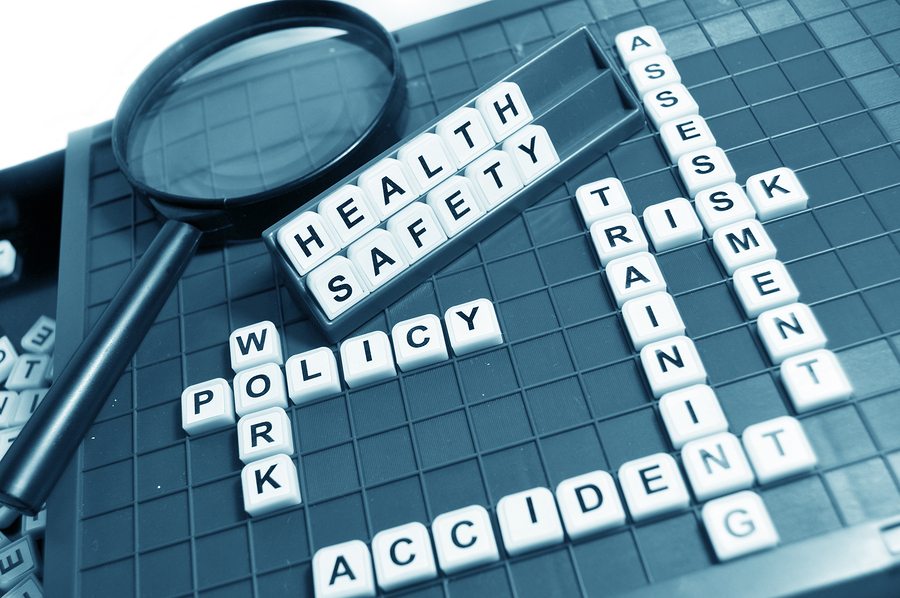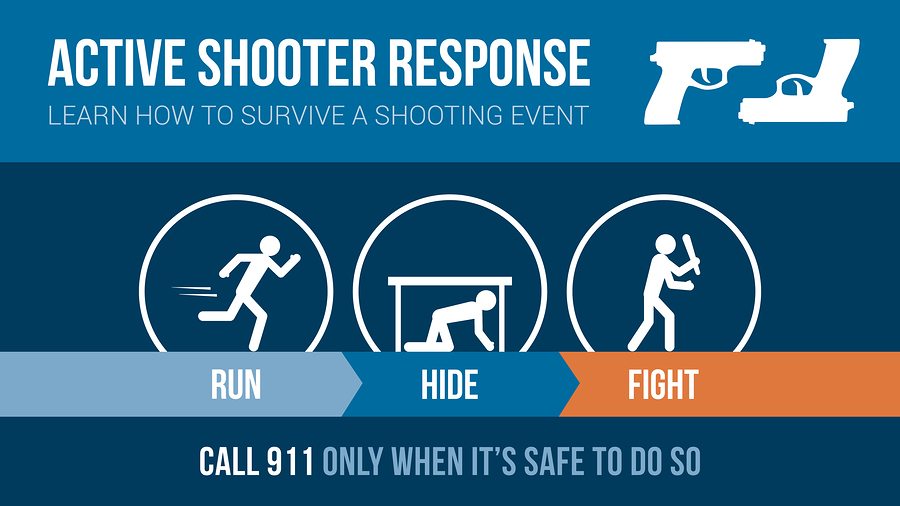by jeffp | Jun 13, 2018 | Workplace Safety

Sexual harassment is not a new topic amongst businesses, but it’s an incredibly important one. All men and women deserve to work in an environment that they feel safe and secure in, and that starts with cracking down on sexual harassment in the workplace.
No matter what industry you work in, if you’re a business leader, then you have the responsibility to create a safe workplace for your employees. To start addressing this worldwide problem in your business and set the tone for responsible business practices, there are a number of things that you should prioritize.
Here are five of the most important priorities for establishing a workplace that is safe for every single employee:
Priority One: Treating Claims Seriously
Suffering from sexual harassment in the workplace and having the courage to report it, only to be turned away by business leaders and HR representatives, is a trust-destroying experience. Individuals who have the courage to report harassment, should be treated to the respect of having the claims taken seriously.
All business leaders should strive to build a workplace that supports employees and shows that mutual respect is a guarantee. This means taking all claims, big and small, seriously, with investigations carried out to get to the bottom of the accusations.
Priority Two: Get Support from the Top
Support for sexual harassment claims should come from the top of a company and filter down to the bottom. New plans for sexual harassment prevention and all forms of support should come from the management team, setting a firm tone for the rest of the company to follow.
By taking control from the top, a business shows that they’re serious about sexual harassment crackdown and that they are willing to do whatever it takes to put a stop to the issue.
Priority Three: Full Organizational Support
Support from the top shouldn’t start and end with giving direction to another department. Leaving the problem of sexual harassment solely to one department to work out is demonstrating a lack of commitment from the rest of the organization, and the business leaders in particular.
Leaders need to make sure that the full organization is informed of the rules for sexual harassment and are fully on board. Every single employee and leader needs to feel comfortable speaking up and dealing with the issue head on.
Priority Four: Making Everyone Accountable
One rule for one person and another rule for someone else is never going to tackle sexual harassment in the workplace. Just as the employees need to be accountable for their actions, so do the leadership and management team of any sized organization.
It should be made clear that the leaders are as accountable for sexual harassment laws, policies, and standards, as every other member of the workforce. A singular rule for everyone must be enforced.
Priority Five: Zero Tolerance Rules
There are few quicker ways to break the trust and lose the respect of a workforce than by going back on rules for something as important as sexual harassment. The only way to end sexual harassment once and for all is through zero tolerance that applies to everyone.
Zero tolerance sets the rules and tells every member of an organization what will happen if they’re broken. By setting a zero-tolerance rule, a leader can begin changing the company culture for the better, telling everyone exactly where they stand with sexual harassment.
Sexual harassment is something that is slowly but surely being tackled in workplaces around the world. As more and more business leaders get their priorities straight for eliminating sexual harassment, workplaces are starting to become safer, more secure, and much more positive places.
Need advice on insurance cover for sexual harassment claims and disputes? Concerned about your insurance coverage from reputation damage and settlement costs? Whether you’re an employee or employer, you can call us today to get the answers you need about insurance and sexual harassment in the workplace.
by jeffp | Jun 7, 2018 | Workplace Safety

Workers face a number of risks every day, but when summer rolls around, there are a whole new set of risks to deal with. One of the most serious of these is heat-related hazards and the associated illnesses that can arise.
Heat-related illnesses (HRI) are suffered from by thousands of US workers on a yearly basis. These can quickly turn into much more serious problems, like heat stroke and exhaustion, when the right safety measures and prevention tactics are not put into place. In the worst cases, HRI’s can turn fatal, killing 30 people each year on average.
While the statistics are truly shocking, especially when you look at the big picture and realize hundreds of people have died in just a decade, the reality is, every one of the HRI fatalities could have been avoided.
Want to better equip your workplace to avoid the risk of HRI’s from occurring? Here’s what you need to know…
The Different Types of Heat-Related Illness
There are five different types of HRI, each of which has clear warning signs that you should always be on the lookout for. Some employees are more prone to suffering from HRI’s, including those that are over the age of 65, take medication, or have certain existing conditions, like obesity or heart disease.
The five HRI’s and their symptoms, include:
- Heat Stroke
- Dry hot skin
- Red skin with no sweat
- Unconsciousness or incoherency
- High body temperature
- Heat Rash – The result of consistently sweaty skin and blocked sweat glands
- Raised rashes
- Blistered rashes
- Heat Cramps – The result of loss of electrolytes and water
- Cramped legs
- Cramped abdomen
- Heat Exhaustion
- Headaches
- Pale Skin
- Vomiting and nausea
- Dizziness and blurred vision
- Severe sweating
- Fainting
- Heat Syncope – The result of sudden movement or standing for too long
Risks in the Workplace
There are a number of key risks in the workplace, and those that are associated with certain jobs, that can increase the risk of an HRI occurring. These include:
- Long hours working
- High humidity and air temperature
- Radiant heat
- Direct sunlight exposure
- No access to water
- No air movement
- Difficult work
- The wrong type of clothing
The Warnings Signs to Be on the Lookout for
While different job types expose workers to different risks and a varied likelihood of an HRI occurring, there are some major symptoms that could indicate that a worker may be suffering from, or likely to suffer from, an HRI. These include:
- Chills
- Headaches
- Fainting
- Disorientation
- Dizziness
- Increased Heart Rate
- Dark Urine
- Swollen Lips
- Reddened Skin
- Changing Moods
Employers – Take Action!
If any of the symptoms arise, it’s important to give your employee time to cool down and get a drink. However, there are also prevention measures that should be put in place, including:
- Training to spot risks and signs
- Caffeine, alcohol, and sugar avoidance
- Easy access to water
- Humidity and temperature monitoring
- Better work schedule, work cycles, and worker acclimatization
- Heat-control related work equipment
- Heat management emergency program
- Buddy system for risk identification
In the heat of summer, it’s of the upmost importance to keep a check on the conditions that you or your employees are working in. Through the implementation of essential tactics for safety, you can provide a much more suitable workplace.
If you want more information about how insurance can help you to get the treatment you need for HRI’s, or what you are covered for, please contact us today so we can answer any questions you might have!
by jeffp | Apr 28, 2018 | Workplace Safety

As an employer, you may be responsible for replenishing lost wages if one of your employees suffers a job-related injury. Most of the time, you will also be required to have workers’ compensation insurance, which is designed to pay a portion of your employee’s usual salary during the time in which they are recovering from a work-related illness or injury.
Some types of workers, such as railroad workers and independent contractors, are not covered by workers’ compensation laws. Additionally, employees can also sue their employers (albeit rarely) if they sustain injuries due to health and safety violations in a workplace or from employer negligence in general.
Is your employee’s injury work-related?
If your employee’s injury is truly work-related, meaning it happened during their work duties or performing a task on your organization’s behalf, then they can claim for workers’ compensation, as well as other forms of relief which you should provide for them. Sometimes your employees may even be covered if they have disregarded your workplace safety rules, for example, if they were “messing about” when they should have been working. This is contentious, however, and tends to divide state governments and courthouses across the country.
Generally speaking, to count as work-related, your employee’s injury has to have occurred during an employee’s work hours, which means that their lunch breaks are disregarded unless they spent it on your premises and suffered an injury in that time. Injuries resulting from drunkenness can still be deemed work-related, particularly if they occur during a work-sponsored Christmas party, for example.
If your employee has a pre-existing medical conditioned which is aggravated by working at your business, this also usually constitutes a workplace injury. Similarly, mental conditions can be treated the same as physical conditions if they are determined to have been sustained as a result of your workplace.
Workers’ Compensation Coverage
Most states will require employers to carry workers’ compensation insurance, though it’s worth noting that Wyoming and Idaho don’t require the coverage of undocumented workers. On the other hand, states such as California, Texas, and Arizona include undocumented workers specifically in their coverage of “workers”.
Domestic workers (such as nannies and babysitters), seasonal workers, undocumented workers and agricultural workers may not be deemed “workers” by many states, so be sure to take this into account when reviewing your Workers’ Compensation Coverage.
Employees who fall under the eligibility guidelines can file a claim for benefits, which is usually around two-thirds of their regular salary. However, they are not entitled to sue you for their injuries in court too. Nevertheless, employers must provide the insurance coverage which is required by the laws in their state. If they don’t, they could receive steep fines and legal troubles galore.
Employees who don’t qualify for Workers’ Comp benefits
Employees who are not covered by Workers’ Comp benefits are often still entitled to legal benefits and compensation from you. Independent contractors, for example, may have contracts which stipulate that an arbitrator settles legal disputes between you and them. Occasionally, in rare cases, an employee may try to sue you. However, this requires very specific circumstances, and is not likely to occur.
Employees who aren’t covered by the Workers’ comp agreements have other options available to them legally, such as the Federal Employees’ Compensation Act, the Federal Employment Liability Act, the Merchant Marine Act, the Longshore and Harbor Workers’ Compensation Act, and the Black Lung Benefits Act.
As you may have guessed, a lot of these legal acts are very industry-specific, relating to industries such as railroads, maritime business, and mining. Unless your business fits into these industries, it is unlikely that you will have to learn too much about them. Nonetheless, it’s a good idea to check what options your injured employees have available to them, whether they’re covered by your insurance policies or not. It can be incredibly useful to be one step ahead of your injured employees, as it allows you to take precautions and predict the legal actions they may take.
Got an injured employee? Looking for legal advice about what your responsibilities are in this situation? Put your mind at ease today by getting touch with one of our knowledgeable advisors.
by jeffp | Apr 27, 2018 | Workplace Safety

Workplace related deaths are rising as of last year while workplace illnesses have decreased. The top 3 non-fatal injuries being sprains, strains, tears.
There is a need to remain vigilant in protecting workers from death while continuing to also manage workplace safety to maintain overall individual health. Health affects safety and vice versa, so companies should take an integrated approach to enhance both their safety and health management capabilities.
The three most impacted industries for health and safety issues include:
- Agriculture, forestry, fishing and hunting
- Manufacturing
- Health care and social assistance
(The health care/social assistance and manufacturing industries reported more than half (52.7 percent) of all private industry illness)
For workplace deaths, the leading cause by a wide margin is transportation incidents. The second cause is workplace violence… and both are on the rise.
The minorities suffering the largest increase in fatal injuries include Asian and African-American workers. Hispanic or Latino workers have actually seen a slight decrease in fatalities. In addition, foreign-born workers make up about 20% of the total fatal work injuries.
Age also is apparently playing a factor. Workers 55 and older saw a significant increase in fatal injuries when compared with other age groups. (In 1992 they made up about 20% of fatalities. By 2016 it was 36%.)
Steps to take in your company to avoid becoming one of the statistics:
by jeffp | Mar 27, 2018 | Workplace Safety

Preparing Your Workplace for an Active Shooter
It’s heartbreaking to acknowledge that violence in the workplace occurs. According to the CDC more than 15,000 employees became a workplace homicide victim over the last 20 years. Four-fifths of these injuries were a result of gunfire.
It’s difficult to imagine something like this would occur where you work. Yet nearly half of all shooting incidents take place in commercial locations.
Survivors of active shooting incidents have successfully sued their companies for neglect in not offering defensive training on how to handle such situations. Refusing to address the potential hazards of an energetic shooter in your office might also be a violation of the OSHA Health And Wellness Act.
It’s important to help your staff understand the potential danger of a situation as well as how handle one should it occur.
First, be on the lookout for employees that show signs of:
- Radical changes in behavior.
- Aggressive behavior such as yelling, pushing, or intimidating others.
- Outward aggressive anger toward coworkers or supervisor.
- Increasing frequency of referencing violent actions.
Encourage your staff to be aware of and report these indications to their supervisor, security or police as required.
You should also ensure your staff knows how to stay safe.
Most active shooter incidents happen quickly and last minutes. You need to train your team to be prepared for potential scenarios, as well as when to leave, shelter, or fight in place as necessary.
Leave– This is the primary way of protection, provided there is an available path to safely escape. Training should include emergency contact processes and how to quickly evacuate facilities.
Shelter– Occasionally escape is not possible. Your staff will need to find a safe hiding area. Places to hide should be out of the active shooter’s line of vision and be very easy to evacuate if the situation changes. Good hiding places allow your team to secure or blockade doors.
Fight– This is a last resort. The key is to distract or incapacitate. Methods can include screaming, hand-to-hand protection strategies, and also improvising weapons.
Finally, you should be sure your team understands how to behave when the authorities show up. When evacuating the building, advise staff to leave personal items behind and keep their hands empty, up, and clearly visible. They also must comply with instructions issued by law enforcement.
And also remember, we’re only a phone call or email away if you have questions about workplace safety and how it impacts your insurance costs.
by jeffp | Mar 25, 2018 | Workplace Safety

Office mishaps happen. They happen regularly and some are severe. OSHA requires employers to take all reasonable actions to protect their personnel from office injuries & work-related health challenges. To comply, it’s vital that you have procedures in place for evaluating accidents that occur.
1. Establish what took place. You’ll need to analyze the scene of the mishap (including any type of equipment utilized during the occurrence), speak to the injured staff member (when possible) as well as collect the accounts of various other workers that witnessed the occurrence. Collect the names of the injured parties, descriptions of the injuries or damage that occurred, and also a timeline of the case.
Questions to Ask:
- Where did the occurrence take place?
- What was the employee doing at the time of the accident?
- Was the employee participating in a brand-new work procedure?
- Were other employees in the area?
- Just what were the witnesses doing at the time of the occurrence?
- What injuries resulted?
- What damage did the mishap create?
2. Identify why it took place. Office accidents hardly ever happen in a vacuum. Accidents happen typically due to moving too quickly, overconfidence, disregarding security procedures, and also lack of prep work. Examining the details will help you determine the underlying causes.
More Questions to Ask:
- What are the conditions where the issue occurred?
- Was the staff member qualified to carry out the job?
- Was the worker properly trained to perform the operation?
- Was the employee making use of appropriate tools and equipment?
- Were these tools/devices in good condition?
- Did the employee comply with all business safety and security policies?
- Was the employee receiving appropriate guidance?
3. Establish how you can protect against future mishaps. Leverage a situation to help you discover how to prevent future situations.
Questions to Consider:
- What short and long-term actions can you take to eliminate such events in the future?
- Do you have to adjust your work environment safety and security methods to ensure compliance?
- How do you handle assessing your environment and personnel?
If you would like more info on best practices to handle workplace safety, please contact our insurance team…








